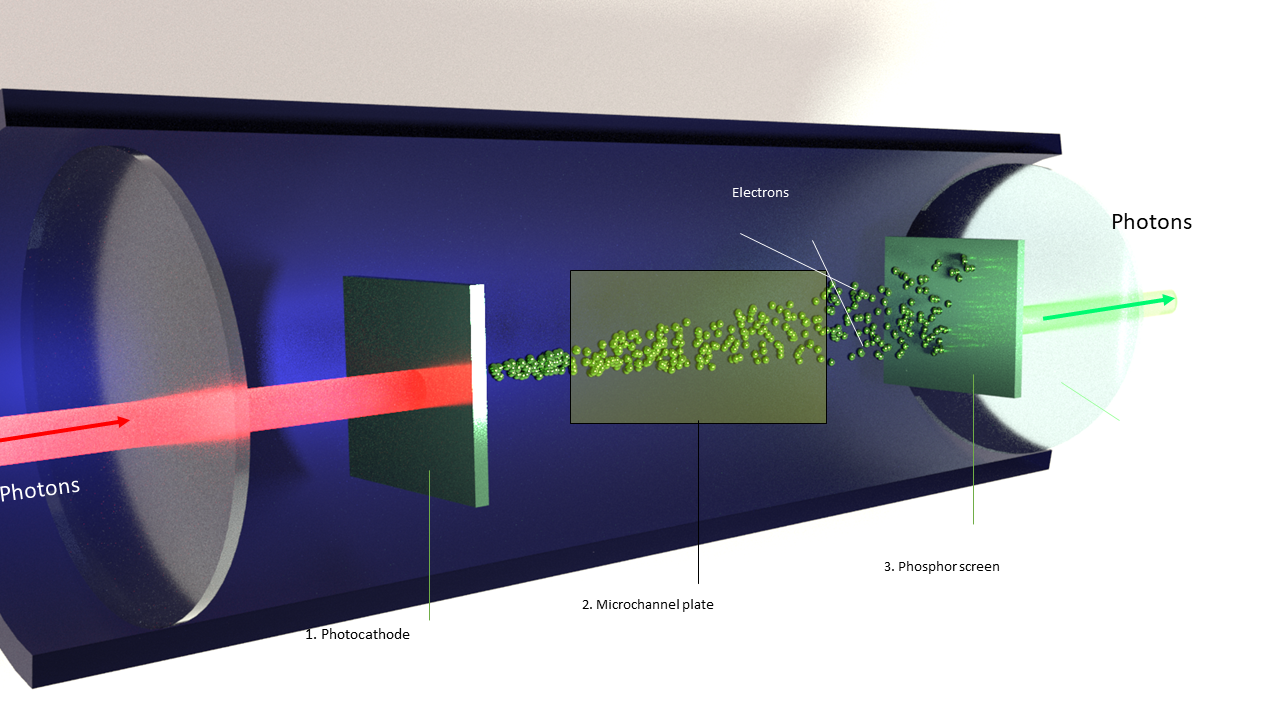/
![]()
Night-vision lenses so thin and light that we can all see in the dark

Lightweight glasses that let us see in the dark could change how we work and play after hours
DALL-E
View 3 Images
1/3
Lightweight glasses that let us see in the dark could change how we work and play after hours
DALL-E
2/3
Traditional night-vision processing requires bulky mechanics
TMOS
3/3
A simpler process of photon manipulation delivers clear night vision through a thin film that could fit over traditional lenses – for all your after-dark kangaroo watching, and much more
TMOS
From evening drives to navigating a house or a park in the dark, there are so many situations where it'd be handy to slip on a simple pair of night-vision lenses and the world that's beyond human optical perception could be illuminated like never before. This vision could be a reality, with a technology breakthrough that could deliver this elusive view to everyday consumers, with an ultra-thin film or lens the width of cling wrap.
Researchers from the ARC Centre of Excellence for Transformative Meta-Optical Systems (TMOS) in Australia have been on a quest to make night vision accessible and wearable, doing away with bulky and expensive headsets and lens attachments.
Their new findings allow all the complex light processing to take place along a simpler, narrower pathway, which essentially means the tech can be packaged up as a night-vision film that weighs less than a gram and can be placed across existing lensed frames.
Having an everyday pair of night-vision spectacles, that look much the same as reading or driving glasses, could change the way we work and play after dark. There's so much potential, from finding your off-leash dog in the park on a late-night walk, to enhanced safety behind the wheel and on foot.
So why aren't we already walking around with our night shades on? Traditional night vision involves a complex system that sees light photons pass through an objective lens, into an electronic image-intensifier tube made up of a two important parts. First, the photocathode converts photons into electrons, which then flow into the microchannel plate, made up of millions of holes to massively multiply electrons. Next, the electrons land on a phosphor-coated screen, and when they hit the phosphors, they 'glow' green, illuminating the scene being viewed through the night-vision system.
TMOS
This method, understandably, would be impossible to currently squeeze onto an ultra-thin piece of plastic film.
Instead, TMOS researchers used metasurface-based upconversion technology, which essentially provides an easier pathway for light photons to be processed. The photons travel through a resonant metasurface, where they mingle with a pump beam. The non-local lithium niobate metasurface boosts the energy of the photons, and draws them into the visible light spectrum without the need to convert them to electrons first. It also doesn't require cryogenic cooling – which reduces 'noise' for sharper images in traditional night vision – so can do away with even more of the bulky night-vision goggle mechanics.

TMOS
“These results promise significant opportunities for the surveillance, autonomous navigation, and biological imaging industries, amongst others," said chief investigator Dragomir Neshev. "Decreasing the size weight and power requirements of night-vision technology is an example of how meta-optics, and the work TMOS is doing, is crucial to Industry 4.0 and the future extreme miniaturisation of technology.”
This new tech also captures the visible and non-visible (or infrared) light in one image as you look through the 'lens.' Traditionally, night-vision systems capture side-by-side views from each spectrum, so they can't produce identical images. What does that mean for the user? Basically, a better-quality view of what's in the dark.
“This is the first demonstration of high resolution up-conversion imaging from 1550-nm infrared to visible 550-nm light in a non-local metasurface," said author Rocio Camacho Morales. "We choose these wavelengths because 1,550 nm, an infrared light, is commonly used for telecommunications, and 550 nm is visible light to which human eyes are highly sensitive. Future research will include expanding the range of wavelengths the device is sensitive to, aiming to obtain broadband IR imaging, as well as exploring image processing, including edge detection.”
The latest work improves on their previous research into night vision using a gallium arsenide metasurface. This time, they found that the lithium niobate metasurface delivered more efficient light processing over a wider surface area.
“People have said that high efficiency up-conversion of infrared to visible is impossible because of the amount of information not collected due to the angular loss that is inherent in non-local metasurfaces," said lead author Laura Valencia Molina. "We overcome these limitations and experimentally demonstrate high efficiency image up-conversion.”
The study was published in the journal Advanced Materials.
Source: ARC Centre of Excellence for Transformative Meta-Optical Systems (TMOS)



